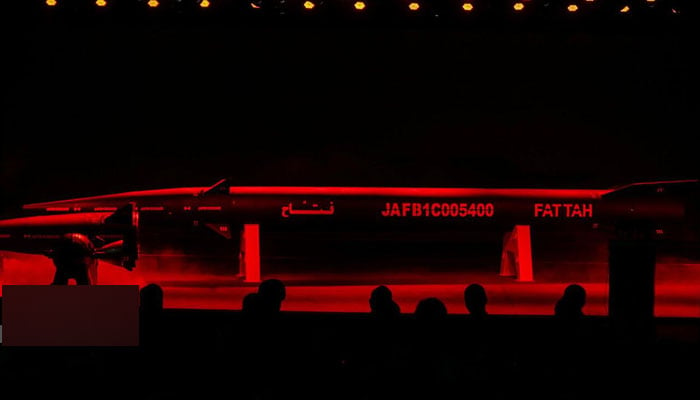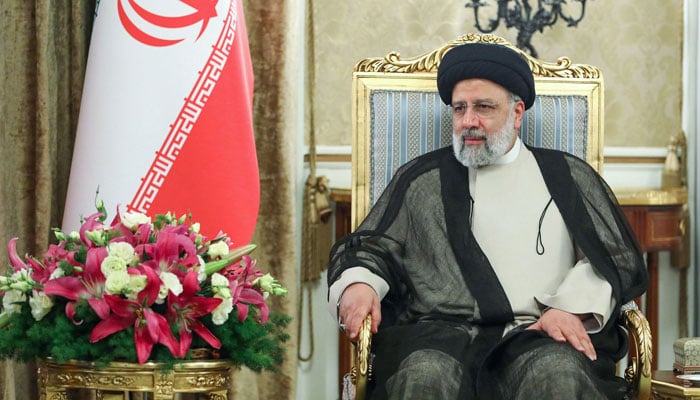[ad_1]

In a major boost to its deterrence capability, Iran’s Islamic Revolutionary Guard Corps Tuesday pulled the curtain on its homegrown intermediate-range hypersonic ballistic missile capable of travelling 15 times the speed of sound, triggering concerns among Western powers and archrival Israel.
The missile named Fattah — conqueror in the Persian language with a range of up to 870 miles (1,400km) — was unveiled at a ceremony in which President Emrahim Rahisi, Guards’ chief General Hossein Salami and other top military officials were also present.
It is expected that the Iranian development could be followed by the Western and US response as the tensions with the West are high over Tehran’s nuclear programme.
President Raisi hailed the new missile’s hypersonic capability, saying it would boost Iran’s “power of deterrence” and “bring peace and stability to the countries of the region.”
Iranian state media IRNA published photographs of the ceremony in a closed.
The media reported that the Fattah missile’s speed before hitting the target is between 13 and 15 times the speed of sound.

Just like other nuclear warheads, hypersonic missiles can be loaded with nuclear payload and Iran’s announcement it was producing one in November that prompted International Atomic Energy Agency (IAEA) chief Rafael Grossi to express concern.
But Grossi added he did not see the new missile “having any influence” on negotiations with Iran over its nuclear activities.
Concerns about Iran’s nuclear capabilities
Negotiations between Iran and P5+Germany on reviving a 2015 nuclear deal that was withdrawn unilaterally by the US under Donald Trump’s administration and imposed renewed sanctions are currently stalled.
Iran has since suspended its implementation of the strict limits it agreed to on its nuclear activities and restricted IAEA monitoring in a policy it is only slowly reversing.
Unlike conventional ballistic missiles, hypersonic warheads fly on a trajectory low in the atmosphere, enabling them to reach their targets more quickly and with less chance of being intercepted by modern air defences.
When the programme was announced last year, Guards aerospace chief General Amirali Hajizadeh said the system was developed to “counter air defence shields”, adding that “he believed it would take decades before a system capable of intercepting it is developed.”
Iran’s arch-foe Israel, which is widely believed to have its own undeclared nuclear arsenal, has multiple air defence shields for countering subsonic and supersonic missiles.
North Korea’s test of a hypersonic missile last year sparked concerns about the race to acquire the technology, which is currently led by Russia, followed by China and the US.
[ad_2]
Source link
